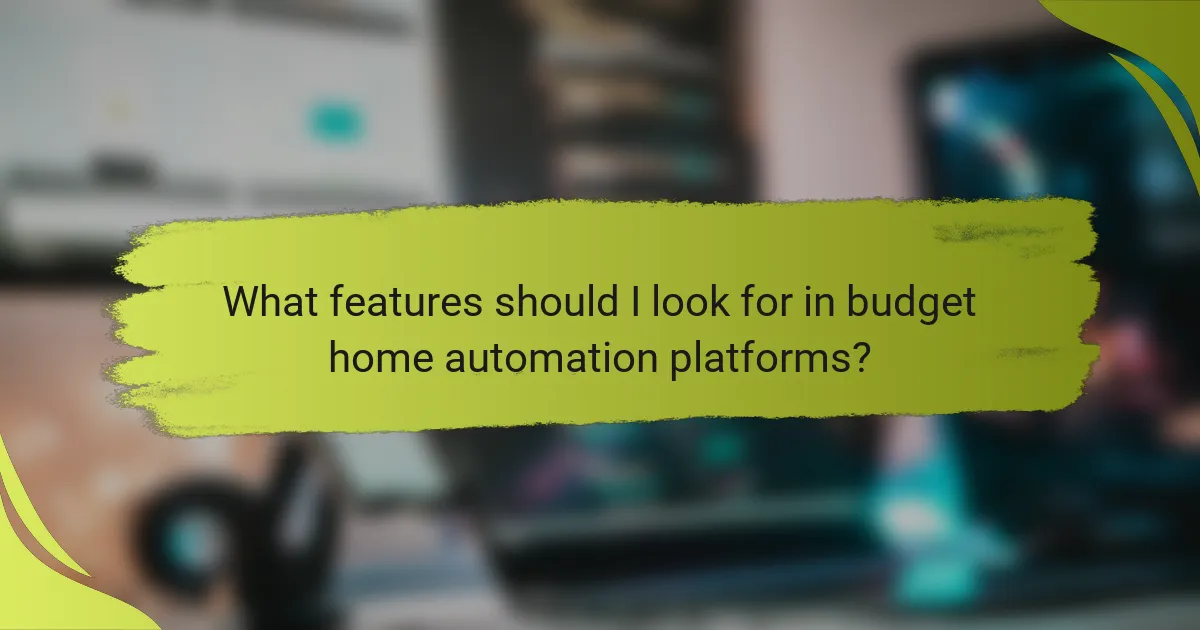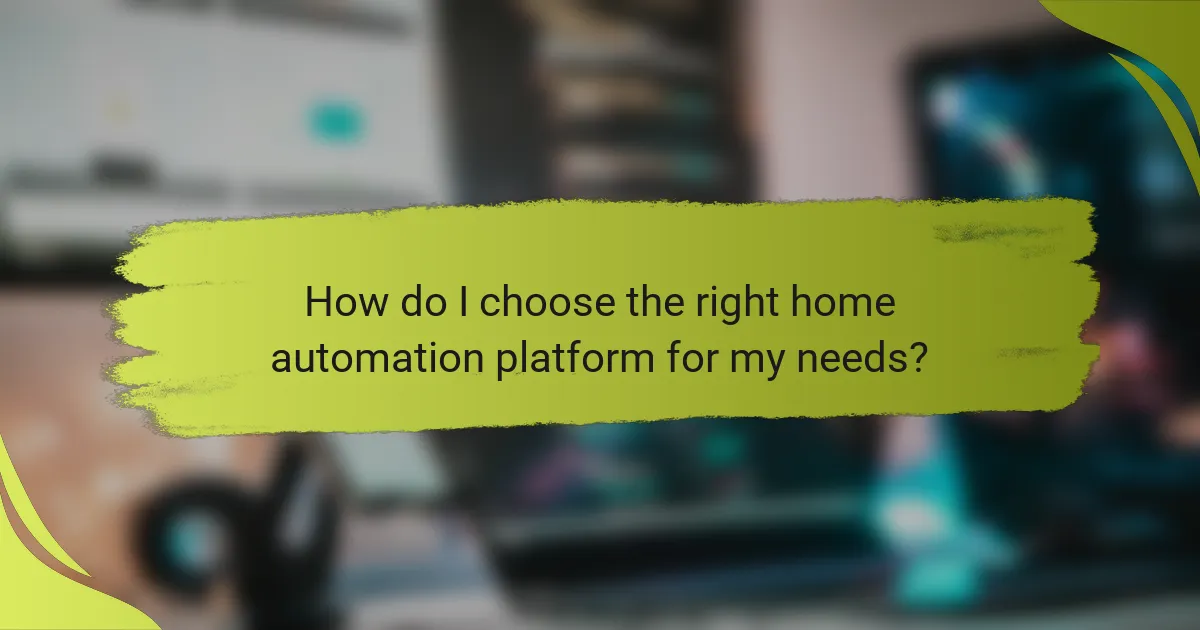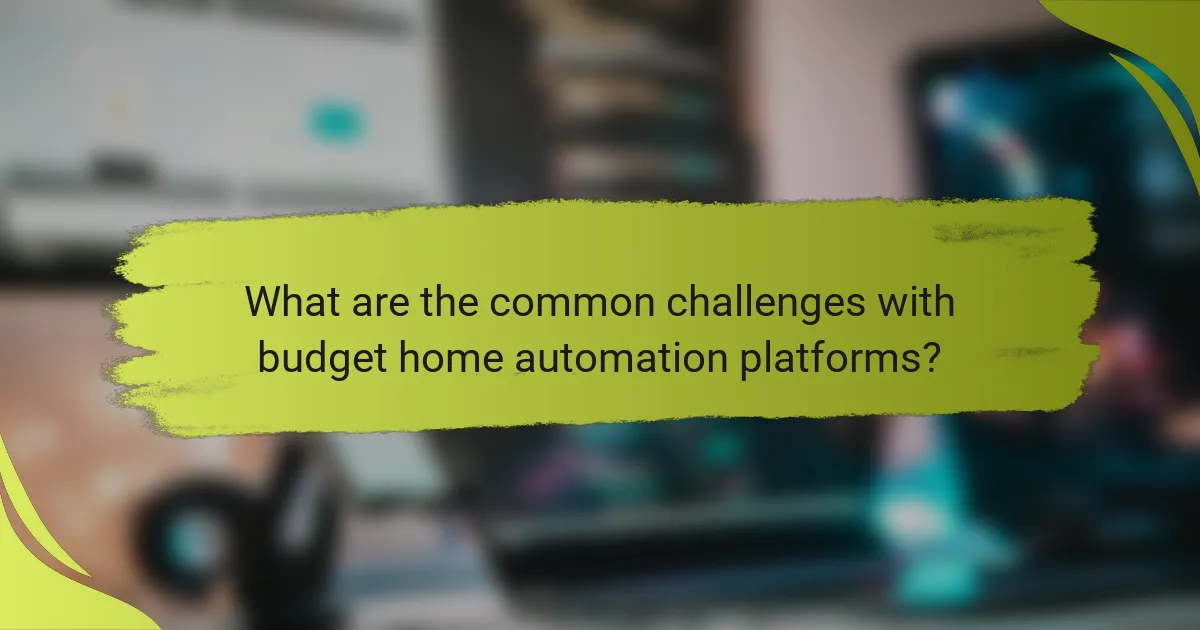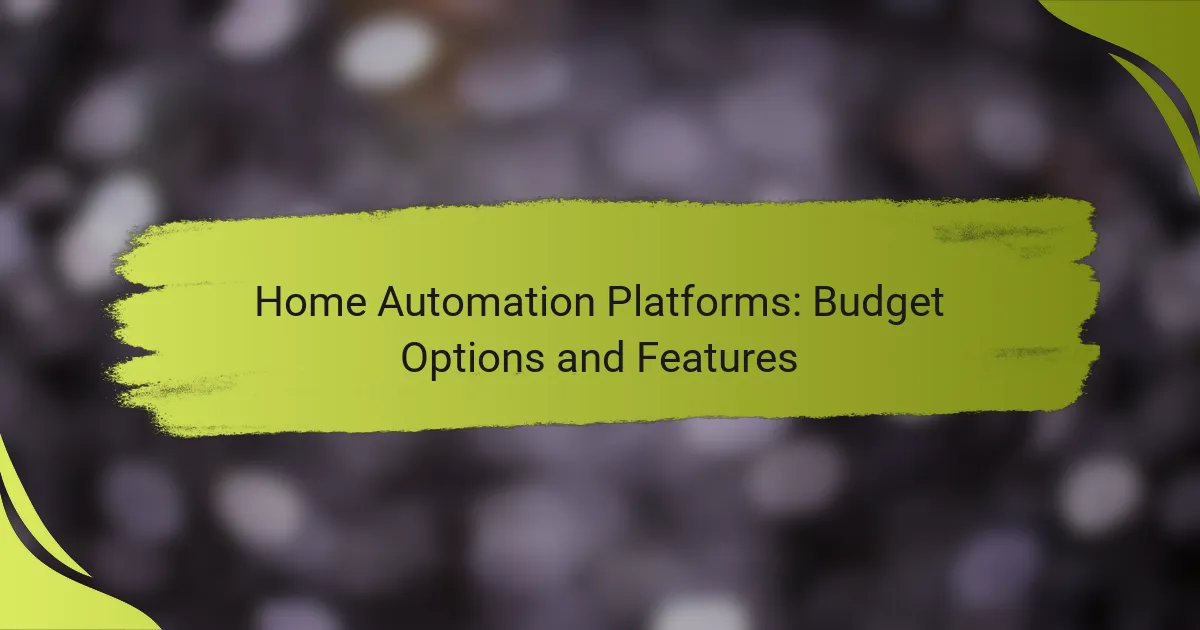Budget home automation platforms offer an accessible way to enhance your living space with smart technology, combining convenience and efficiency without breaking the bank. Popular options like Amazon Alexa, Google Nest, and TP-Link Kasa provide unique features and compatibility with various devices, making it easier to create a connected home. When choosing a platform, consider factors such as device compatibility, user-friendliness, and security features to ensure a seamless integration with your lifestyle.

What are the best budget home automation platforms in India?
The best budget home automation platforms in India provide affordable solutions for smart home control, enhancing convenience and efficiency. Key options include Amazon Alexa, Google Nest, TP-Link Kasa, Xiaomi Mi Home, and Philips Hue, each offering unique features and compatibility with various devices.
Amazon Alexa
Amazon Alexa is a versatile voice assistant that integrates with numerous smart home devices, making it a popular choice for budget-conscious users. It allows users to control lights, thermostats, and security systems through voice commands or the Alexa app.
Consider starting with an Amazon Echo device, which typically ranges from INR 3,000 to INR 10,000. Alexa’s compatibility with a wide array of third-party devices means you can easily expand your smart home setup over time.
Google Nest
Google Nest offers a range of smart home products, including speakers, displays, and security cameras, all controlled via Google Assistant. This platform is user-friendly and provides seamless integration with Google services.
Devices like the Nest Mini or Nest Hub can be found between INR 3,500 and INR 10,000. Google Nest’s compatibility with various smart home brands allows for easy automation and control of your home environment.
TP-Link Kasa
TP-Link Kasa is known for its budget-friendly smart plugs, bulbs, and cameras that can be controlled through the Kasa app or voice commands. This platform is ideal for those looking to start small with home automation.
Kasa smart plugs and bulbs generally cost between INR 1,000 and INR 3,000. The easy setup and reliable performance make Kasa a great entry point for beginners in home automation.
Xiaomi Mi Home
Xiaomi Mi Home offers a range of affordable smart devices, including lights, sensors, and cameras, all managed through the Mi Home app. This platform is particularly appealing for users seeking cost-effective solutions without sacrificing functionality.
Prices for Xiaomi devices typically range from INR 500 to INR 5,000, making it accessible for most budgets. The ecosystem is designed for easy integration, allowing users to create customized automation routines.
Philips Hue
Philips Hue specializes in smart lighting solutions, providing a variety of bulbs and fixtures that can be controlled via the Hue app or voice assistants. This platform is perfect for those looking to enhance their home ambiance with smart lighting.
Starter kits for Philips Hue usually start around INR 4,000 and can go up depending on the number of bulbs and features included. While slightly pricier than other options, the quality and versatility of Philips Hue lighting make it a worthwhile investment for a smart home setup.

What features should I look for in budget home automation platforms?
When selecting budget home automation platforms, prioritize compatibility with devices, user-friendly interfaces, security features, and voice control options. These elements significantly impact the functionality and ease of use of your home automation system.
Compatibility with devices
Compatibility is crucial as it determines which devices can be integrated into your home automation system. Look for platforms that support a wide range of smart devices, including lights, thermostats, cameras, and locks from various manufacturers. Ideally, choose platforms that are compatible with popular standards like Zigbee or Z-Wave to ensure broader device integration.
Before purchasing, check the platform’s official website or user reviews to confirm compatibility with your existing devices. This can save you from investing in a system that doesn’t work with your current setup.
User-friendly interface
A user-friendly interface enhances your experience with home automation platforms. Look for systems that offer intuitive navigation, clear icons, and easy setup processes. A well-designed app or web interface can make managing your devices straightforward, even for those who are not tech-savvy.
Consider platforms that provide customization options, allowing you to arrange controls according to your preferences. A good interface should also include helpful tutorials or customer support to assist with any questions.
Security features
Security features are essential in protecting your home automation system from unauthorized access. Look for platforms that offer end-to-end encryption, two-factor authentication, and regular software updates to address vulnerabilities. These measures help safeguard your personal data and connected devices.
Additionally, consider platforms that allow you to monitor security cameras or receive alerts for unusual activity. This can enhance your peace of mind and ensure that your home remains secure.
Voice control options
Voice control options provide convenience and hands-free operation of your home automation system. Look for platforms that are compatible with popular voice assistants like Amazon Alexa, Google Assistant, or Apple Siri. This integration allows you to control devices using simple voice commands.
When evaluating voice control capabilities, check the range of commands supported and whether the platform can execute multiple commands in a single request. This can streamline your interactions and enhance the overall user experience.

How do I choose the right home automation platform for my needs?
To choose the right home automation platform, assess your current devices, budget, and future needs. A well-suited platform will integrate seamlessly with your existing technology while remaining affordable and adaptable for future upgrades.
Assess your existing devices
Start by identifying the devices you currently own, such as smart lights, thermostats, or security cameras. Ensure the home automation platform you consider is compatible with these devices to avoid additional costs for replacements or upgrades.
Check for compatibility with popular standards like Zigbee or Z-Wave, as these can enhance integration across different brands. A platform that supports a wide range of devices will provide greater flexibility and functionality.
Evaluate budget constraints
Determine how much you are willing to spend on a home automation platform, including initial setup and ongoing costs. Basic systems can start in the low hundreds of USD, while more advanced setups may reach into the thousands.
Consider both hardware and subscription fees, as some platforms require monthly payments for premium features. Look for platforms that offer a good balance of features and affordability to avoid overspending.
Consider future scalability
Choose a home automation platform that can grow with your needs. As technology evolves, you may want to add new devices or features, so select a system that allows for easy expansion.
Research platforms that offer modular options or support for a wide range of devices. This will ensure that your investment remains relevant and functional as your home automation needs change over time.

What are the installation costs for home automation systems in India?
The installation costs for home automation systems in India can vary widely based on the complexity of the system and the choice between DIY or professional installation. Generally, DIY options can start from a few thousand rupees, while professional installations may range from tens of thousands to over a lakh, depending on the features and technology used.
DIY installation options
DIY installation of home automation systems is a cost-effective choice for tech-savvy individuals. Basic systems can be set up using smart plugs, bulbs, and hubs that are readily available in the market, often costing between INR 2,000 to INR 10,000 for a starter kit.
When opting for DIY, consider the compatibility of devices and the ease of integration with existing home networks. Many manufacturers provide detailed guides and online resources to assist with setup, which can significantly reduce the learning curve.
Professional installation rates
Professional installation for home automation systems typically ranges from INR 15,000 to INR 1,00,000, depending on the complexity and scale of the project. This includes labor costs and may also cover the integration of various systems such as lighting, security, and climate control.
Hiring professionals ensures that the installation is done correctly and efficiently, minimizing the risk of technical issues later. It’s advisable to get multiple quotes and check reviews before selecting an installer to ensure quality service.

What are the common challenges with budget home automation platforms?
Budget home automation platforms often face challenges such as limited compatibility, reduced functionality, and potential security vulnerabilities. Users may find that these platforms do not integrate well with existing devices or lack advanced features found in premium options.
Limited Device Compatibility
Many budget home automation platforms struggle with compatibility across different brands and devices. This can lead to frustration when trying to connect smart devices that are not supported, limiting the overall effectiveness of the system.
Before purchasing, check the compatibility list of the platform to ensure it supports the devices you already own. Look for platforms that offer integration with popular ecosystems like Google Home or Amazon Alexa for broader compatibility.
Reduced Functionality
Budget platforms often come with fewer features compared to their higher-priced counterparts. Users may miss out on advanced automation options, customizable settings, or the ability to control devices remotely.
Evaluate the essential features you need, such as scheduling, remote access, or voice control, and compare them across different platforms. Prioritize platforms that meet your basic requirements without unnecessary extras.
Security Vulnerabilities
Security can be a significant concern with budget home automation platforms, as they may not receive regular updates or have robust security measures in place. This can leave your home network exposed to potential threats.
To mitigate risks, choose platforms that prioritize security updates and offer encryption for data transmission. Research user reviews and expert opinions to assess the security track record of the platform before making a decision.
